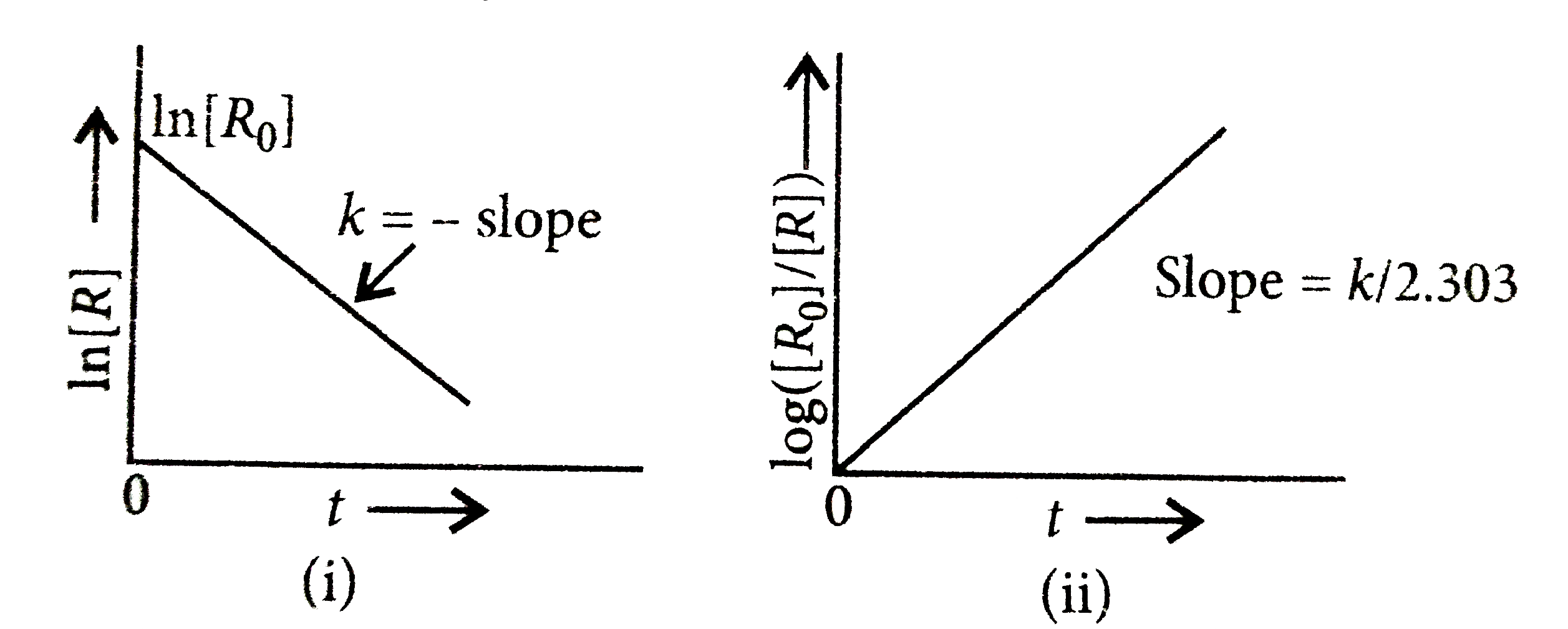Complete Solutions to Integrated Rate Equation of chapter CHEMICAL KINETICS of Class 12 book with complete answers and questions
| Class 12 | CHEMISTRY |
| Chapter | CHEMICAL KINETICS |
| NCERT FINGERTIPS | Integrated Rate Equation |
| Number Of Questions | 25 |
| Academic Year | 2023-24 |
The reaction `2X to Y + Z` would be zero order reaction when
View SolutionDerive an expression to calculate time required for completion of zero order reaction.
View SolutionA plot of log (a-x) against time 't' is a straight line. This indicates that the reaction is of :
View SolutionObserve the given graphs carefully.

Which of the given orders are shown by the graphs respectively?
View SolutionRadioactive distintegration is an example of
View SolutionA first order reaction has a rate constant of `5 xx 10^(-3) s^(-1)`. How long will `5.0 g` of this reaction take to reduce to `3.0 g` ?
View SolutionIn a first order reaction, the concentration of reactant decrease from 400 mol `L^(-1)` to 25 mol `L^(-1)` in 200 seconds. The rate constant for the reaction is
View SolutionA first order reaction is 20% complete in 10 minutes. What is the specific rate constant for the reaction?
View SolutionThe decomposition of a substance follows first order kinetics. If its concentration is reduced to 1/8 th of its initial value in 12 minutes, the rate constant of the decomposition system is
View SolutionA first order reaction takes 40 min for `30%` decomposition. Calculate `t_(1//2)`. (Given `log 7 =0.845)`
View SolutionThe following data were obtained during the first order thermal decomposition of `SO_(2)CI_(2)` at a constant volume.
`SO_(2)CI_(2(g)) to SO_(2(g)) + CI_(2(g))`
`{:("Experiment","Time"//s^(-1),"Total pressure"//"atm"),(1,0,0.5),(2,100,0.6):}`
What is the rate of reaction when total pressure is 0.65 atm?
View SolutionA first order reaction has a rate constant `1.15xx10^(-3)s^(-1)`. How long will `5g` of this reactant take to reduce to `3g`` ?
View SolutionThe decomposition of dinitrogen pentoxide `(N_(2)O_(5))` follows first order rate law. Calculate the rate constant from the given data:
`t=800sec[N_(2)O_(5)]=1.45 "mol"L^(-1)=[A_()]`
`t=600 sec [N_(2)O_(5)]=0.88"mol"L^(-1)=[A_(2)]`
View SolutionHalf life of a first order reaction in 10 min. What `%` of reaction will be completed in 100 min ? `
View SolutionThe half life for radioactive decay of `.^(14)C` is 5730 years. An archaeological artifact containing wood had only `80%` of the `.^(14)C` found in a living tree. Estimat the age of the sample.
View SolutionWhat will be the half-life of the first order reaction for which the value of rate constant is `200 s^(-1)`?
View SolutionThe rate constant of first order reaction is `10^(-2)"min"^(-1)`. The half-life period of reaction is
View SolutionIn a first order reaction, The concentration of reactant is reduced to 1/8th of the initial concentration in 75 minutea at 298 K. What is the half period of the reaction in minutes?
View SolutionCalculate the half life of the reaction `ArarrB`, when the initial concentration of A is `0.01 "mol" L^(-1)` and initial rate is `0.00352 "mol" L^(-1)"min"^(-1)`. The reaction is of the first order
View SolutionIn pseudo-unimolecular reactions :
View SolutionThe value of rate of a pseudo first order reaction depends upon
View SolutionState one condition under which a bimolecular reaction may be kinetically of first order reactions.
View SolutionThe hydrolysis of ethyl acetate is a reaction of :
` CH_(3)COOC_(2)H_(5)+H_(2)Ooverset(H^(+))rarr CH_(3)COOH+C_(2)H_(5)OH`
View SolutionWhich one of the following is wrongly matched?
View SolutionIn a pseudo first order hydrolysis of ester in water the following result6s were obtained:
`{:(t//s,0,30,60,90),(["Ester"],0.55,0.31,0.17,0.085):}`
(i) Calculate the average rate of reaction between the time interval `30` to `60` seconds.
(ii) Calculate the pseudo first order rate constant for the hydrolysis of ester.
View Solution
Integrated Rate Equation questions and complete solutions for chapter CHEMICAL KINETICS of MTG CHEMISTRY (ENGLISH) of Class 12